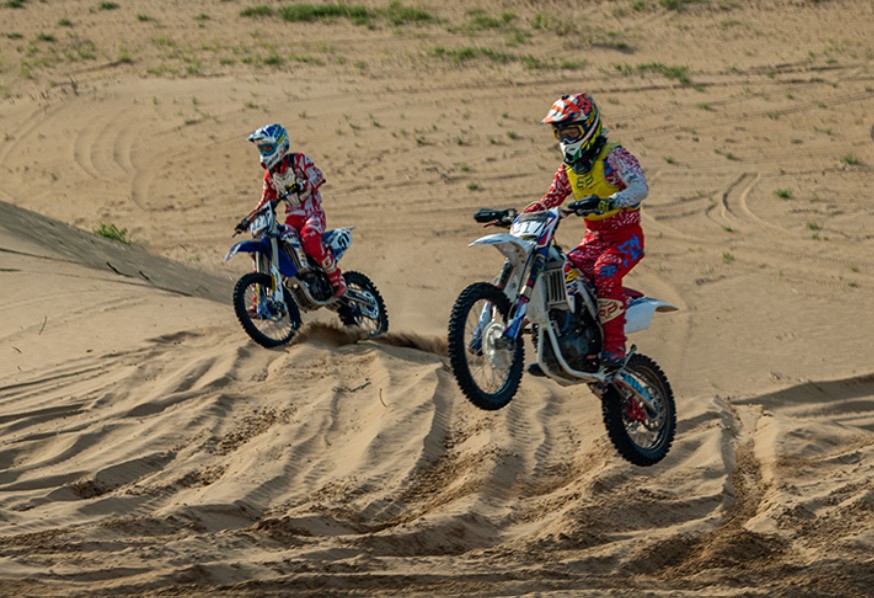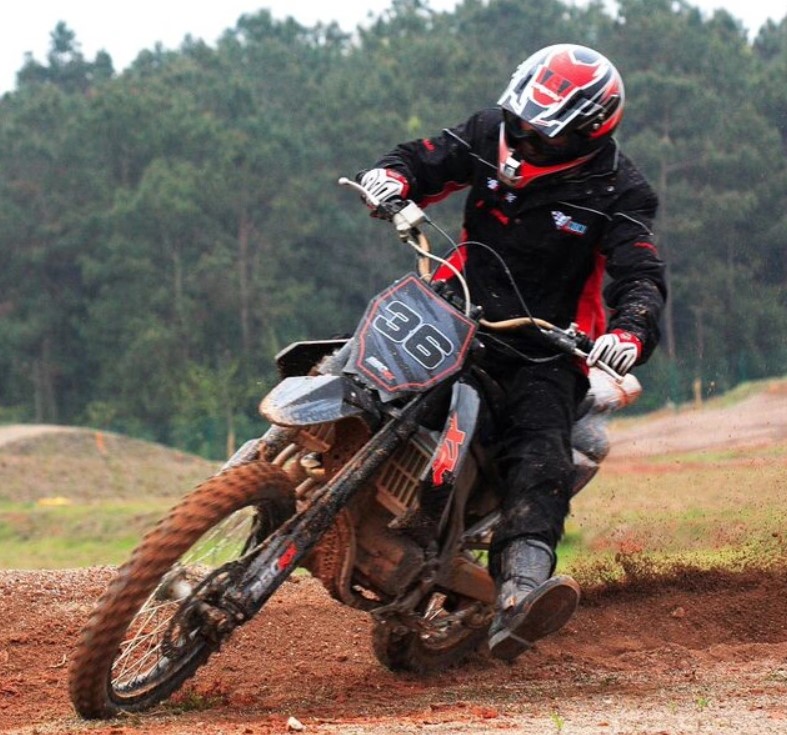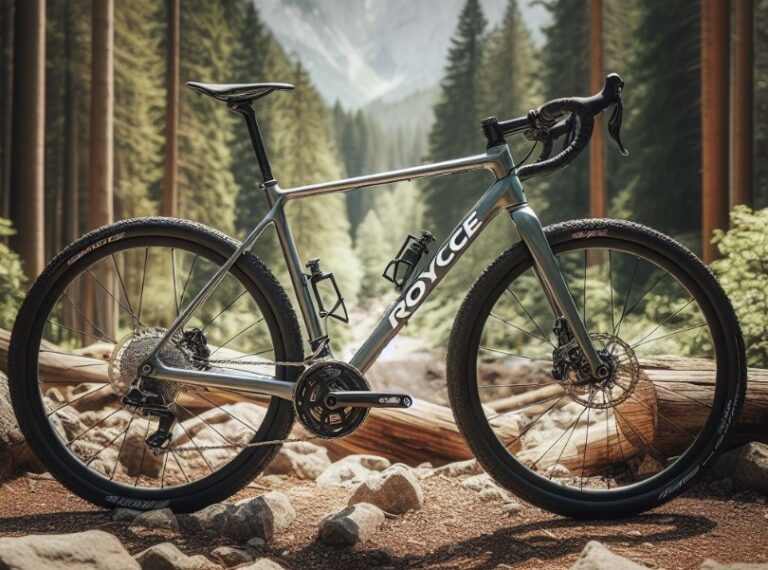How To Make A Dirt Bike Quiet? A Complete Breakdown
Are you looking for How To Make A Dirt Bike Quiet? My neighbor had an incredibly loud dirt bike. After some research and tweaks, he managed to make his dirt bike quiet, transforming our peaceful afternoons. This article delves into simple, effective ways to reduce dirt bike noise, just like my neighbor did.
Key Takeaways
- Muffler Modifications: Implementing changes to the bike’s muffler system.
- Regular Maintenance: Ensuring the bike is well-maintained to reduce noise.
- Soundproofing Materials: Utilizing sound-dampening materials in key areas.
- Engine Tuning: Adjusting engine settings for quieter operation.
- Exhaust System Upgrades: Replacing or upgrading the exhaust system components.
How To Make A Dirt Bike Quiet?
To make a dirt bike quiet, you can modify the muffler, regularly maintain the engine, and use soundproofing materials. For example, installing a sound-dampening muffler insert helps reduce noise.
Also, keeping the engine well-tuned and using sound-dampening wraps around the exhaust can significantly lower noise levels. These methods work by reducing the sound at its source and absorbing the noise before it spreads.

Muffler Modifications for Noise Reduction
Making a dirt bike quieter often starts with the muffler. The muffler is crucial in controlling exhaust noise.
Installing a Sound-Dampening Muffler Insert
These inserts can significantly reduce noise output. They work by restricting the exhaust flow, which lowers the sound level. However, it’s important to balance noise reduction with performance needs.
Choosing the Right Muffler
Selecting a muffler designed for noise reduction is key. Some mufflers are specifically engineered to reduce noise while maintaining performance. It’s essential to choose a model compatible with your dirt bike for optimal results.
The Importance of Regular Maintenance
Maintaining your dirt bike is critical in keeping noise levels down.
Regularly Checking and Replacing Exhaust Components
Worn or damaged exhaust parts can increase noise levels. Regular checks ensure everything is in working order. Replacing any faulty parts is crucial for maintaining a quiet bike.
Keeping the Engine Properly Tuned
A well-tuned engine runs more quietly. Regular servicing ensures the engine operates efficiently, reducing unnecessary noise.
Utilizing Soundproofing Materials
Soundproofing materials can be a game-changer in reducing dirt bike noise.
Applying Sound-Dampening Wraps to the Exhaust
These wraps absorb sound vibrations, significantly reducing noise emissions. They are easy to apply and can be a cost-effective solution.
Using Soundproofing in the Airbox
The airbox is another source of noise. Adding soundproofing material here can help muffle intake noise, contributing to overall noise reduction.
Engine Tuning for Quieter Operation
Proper engine tuning is essential for a quieter dirt bike.

Adjusting Carburetor Settings
Tweaking the carburetor can result in quieter operation. This includes adjusting the air-fuel mixture and idle settings for optimal performance and reduced noise.
Upgrading to a Quieter Engine Model
If feasible, upgrading to a newer, quieter engine can be a significant step. Newer models often have improved noise reduction features.
Exhaust System Upgrades
Upgrading the exhaust system is a direct approach to reducing noise.
Investing in a High-Quality Silencer
A quality silencer can drastically reduce exhaust noise. It’s important to choose one that matches your bike’s specifications.
Exploring Full Exhaust System Replacements
For the best results, consider replacing the entire exhaust system with a quieter, more efficient model. This can be a more expensive option but offers significant noise reduction.
Sound Level Testing and Legal Considerations
Understanding the legal noise limits and regularly testing your bike’s sound levels is important.
Awareness of Local Noise Regulations
Different areas have varying regulations regarding acceptable noise levels for dirt bikes. It’s crucial to be aware of and comply with these regulations.
Using Decibel Meters for Accurate Measurements
Regularly measuring your bike’s noise output with a decibel meter ensures compliance and helps gauge the effectiveness of your noise reduction efforts.
Rider Techniques for Noise Management
How you ride your dirt bike can also impact noise levels.
Practicing Smooth Throttle Control
Smooth and controlled use of the throttle can significantly reduce noise. Aggressive acceleration typically leads to higher noise levels.
Choosing Riding Locations Wisely
Riding in less noise-sensitive areas can also be part of the solution. Avoiding densely populated areas helps minimize noise disturbance.
The Role of Engine Size and Type
The engine is a primary noise source in dirt bikes.
Understanding the Noise Characteristics of Different Engines
Different engines produce different levels of noise. Generally, larger engines are louder.
Opting for Four-Stroke Engines
Four-stroke engines tend to be quieter than two-stroke engines. If noise is a major concern, consider choosing a four-stroke model.
Impact of Tire Choice on Noise Levels
Tires play a surprisingly significant role in noise production.

Selecting Tires Designed for Quieter Operation
Some tires are designed to produce less noise, particularly on hard surfaces. Choosing the right tires can contribute to overall noise reduction.
Maintaining Proper Tire Pressure
Properly inflated tires can also help reduce noise, as they absorb impacts more effectively, leading to quieter rides.
Alternative Sound Reduction Techniques
Beyond the basic methods, there are several alternative techniques to further reduce noise from a dirt bike.
Utilizing Engine Covers for Noise Insulation
Engine covers made from noise-absorbing materials can substantially dampen engine noise. These covers work by enclosing the noisy engine parts, thus reducing the sound that escapes into the environment.
Implementing Vibration Dampers
Excessive vibration contributes to noise. Using vibration dampers on various parts of the dirt bike, such as the handlebars and frame, can significantly reduce noise. These dampers absorb and dissipate the energy from vibrations, leading to a quieter ride.
Technological Innovations in Noise Reduction
Advancements in technology have introduced new ways to make dirt bikes quieter.
Electric Dirt Bikes: A Silent Alternative
Electric dirt bikes offer an almost silent riding experience. They eliminate the need for a conventional combustion engine, which is the primary source of noise in traditional dirt bikes.
Noise-Canceling Exhaust Systems
Recent innovations include exhaust systems equipped with noise-canceling technology. These systems use sound waves to counteract and neutralize the noise produced by the exhaust, leading to a significant reduction in overall noise levels.
Custom Modifications for Noise Control
Custom modifications can be an effective way to address specific noise issues in dirt bikes.
Designing Custom Exhaust Layouts
Creating a custom exhaust layout tailored to your bike can help in reducing noise. This might involve rerouting the exhaust pipes or adding additional muffling components.
Building a Custom Airbox
A custom-built airbox, designed with noise reduction in mind, can significantly decrease intake noise. This can involve using specific materials and designs that absorb sound more effectively.
Conclusion
Making a dirt bike quieter involves a combination of equipment upgrades, regular maintenance, and mindful riding practices. By implementing these strategies, riders can enjoy a quieter and more environmentally friendly dirt biking experience. Remember, a quieter dirt bike not only benefits the rider but also respects the community and the environment.
Top FAQ’s
Can changing the engine oil type affect noise levels?
Yes, using high-quality engine oil can reduce engine noise. The oil lubricates moving parts, reducing friction and, consequently, the noise produced.
Does tire tread pattern impact noise levels?
Absolutely. Tires with certain tread patterns are designed to reduce noise, especially on harder surfaces. Choosing the right tire can contribute to a quieter ride.
Will adding weight to the bike reduce noise?
Adding weight in strategic locations can help dampen vibrations, which in turn can reduce noise. However, this needs to be done carefully to maintain the bike’s performance and safety.
Is it possible to reduce noise without sacrificing performance?
Yes, many noise-reduction methods, like using a high-quality silencer or maintaining the bike properly, can reduce noise without impacting performance.
Can rider technique influence noise levels?
Definitely. Techniques like smooth throttle control and choosing less aggressive riding styles can significantly lower the noise produced during a ride.

Welcome to the exhilarating world of Matt Rex, a professional car racer turned renowned vehicle enthusiast. Immerse yourself in his captivating blog as he shares heart-pounding adventures, expert reviews, and valuable insights on cars, trucks, jets, and more. Fuel your passion for speed and discover the beauty of vehicles through Matt’s engaging stories and meticulous expertise. Join the ever-growing community of enthusiasts who find inspiration and expert advice in Matt Rex’s blog—a digital hub where the thrill of speed meets the pursuit of knowledge.







